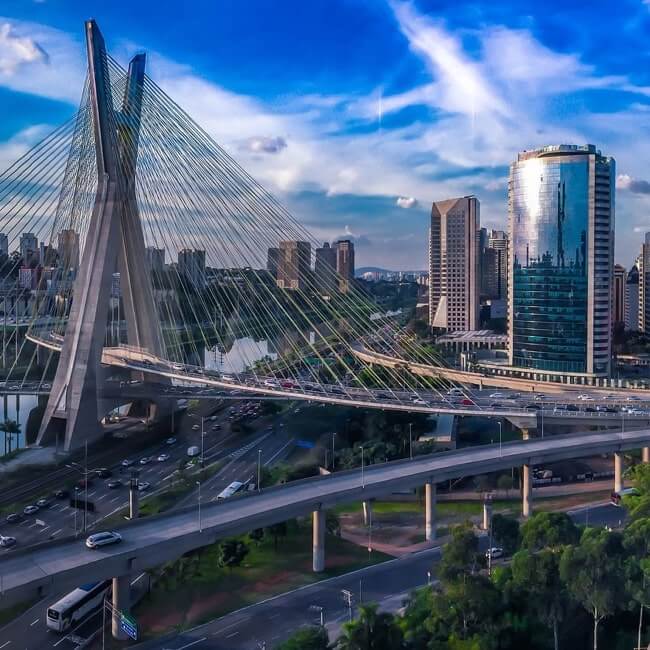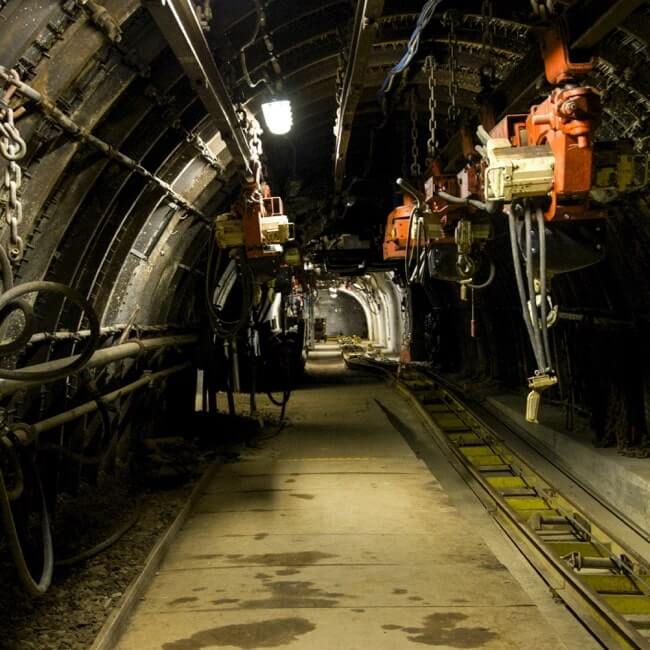Off to a slow start: PPPs in Guatemala

Guatemala’s congress approved the country’s first public-private partnership project in 2021 – the expansion of the Escuintla-Puerto Quetzal highway – after several years of stagnation.
According to consultancy EY, there are at least 15 ther projects waiting to advance.
BNamericas spoke with EY lawyer Astrid Zosel about the main challenges for PPPs in Guatemala.
BNamericas: Why do you think PPPs took so long to reach Guatemala?
Zosel: First, because the PPP model was not understood in the country, despite the fact that there were many efforts to move it forward. The state contracting law already considered PPPs with a very brief chapter on concessions, such as the Palín-Escuintla highway project and the general post office project. In other words, there were PPPs through the contracting law in the concession scheme, but we did not have a specific figure that was so detailed, that outlined everything such as previous studies, approval, financial management of the projects, which is not in the concession law.
BNamericas: So there were public-private partnerships, but not under that name?
Zosel: Not so developed. There were concessions but the regulatory framework was very brief, there are only nine articles that are in the traditional public procurement law. Now there is the PPP law, which is already a developed model and has a better structure for projects, studies and analysis to see if it’s important and if it has value, why it’s important for the State and users to carry it out under that model.
BNamericas: Following the approval of this first PPP, what is the big picture?
Zosel: Guatemala has reached a certain starting point in the matter, but throughout the life cycle of the project we realized that there are certain things that do need to be improved. For example, there is a lack of long-term planning, and PPPs are still unknown in many sectors because they still tend to be confused with privatization. The model has not reached maturity for the public to understand what a PPP means, which is the long-term contracting system where the State does not lose ownership of the property. We also see that the lack of funding for studies has been a problem that [PPP agency] Anadie has faced. By the time the contracts go through congress for approval, there is politicization of the projects – which is what halted the Escuintla-Puerto Quetzal project.
BNamericas: So does Anadie not have enough resources to operate?
Zosel: That depends on the policy, on how much resources are assigned to carry out studies, but I think there have been many improvements because just having done one and it’s been approved is already a good step forward and gives good signs. There are two other [projects] that are nearing completion and ready to be put out to bidding.
BNamericas: Which ones?
Zosel: [The expansion of] La Aurora international airport and [the construction of] the state administrative center, and then there all those related to mobility, including a BRT project, and the Metrorail that are pending, but the first two are ready because they already have prefeasibility and feasibility studies.
BNamericas: Do you think that with its limitations, Anadie has performed well?
Zosel: With its resources, support, and legislation it has been handled well. It has room for improvement like any institution. There is a proposal to reform Anadie because they’ve found certain issues in the law on partnerships that have proved to be limitations to obtain the results they’re looking for, and I understand that it’s a project they’ve been working on. I think it’s vital that they finish it and pass it to congress for approval. An example of these limitations is that Guatemala does not allow private initiatives. The fact that private entities can’t contribute by identifying needs is an obstacle to creativity. Another is that passage through congress should be handled in a better, more technical and less political way.
BNamericas: When does the legislation on PPPs date back to?
Zosel: The decree came out in 2010, but it didn’t come into force until the agency's operating regulations were issued, so it couldn’t start functioning. The regulation came out around 2011 or 2012, and it’s legislation that does need to be reviewed.
BNamericas: What’s stopping the process?
Zosel: I understand that Anadie has not even presented it to congress, since it has to go through the filter of a government entity to present it as a bill. In Guatemala, only certain entities have the right to present initiatives to modify laws, and the legal filter would be through the presidency of the republic. But there is time. Anadie has made it public in the media but it has not officially presented it to congress.
BNamericas: Which are the sectors that could benefit most from the PPP model?
Zosel: I think the transportation issue is vital. Guatemala needs significant investment in ports, airports and highways, both urban and interurban, and other types of mobilities. For example, to have a train, a cable car, that provide alternative forms of mobility because traffic in Guatemala City is very congested, and obviously traveling on highways is complicated. Highways are almost always built using public funds, through a traditional contracting system.
BNamericas: What are the specific projects that Guatemala needs the most?
Zosel: La Aurora airport needs urgent investment. It’s within Guatemala City itself, and according to Anadie it’s about to exceed capacity, so it’s important. In ports it’s necessary to build breakwaters, and also a cargo terminal in the port of San José, which is being built under the traditional public works scheme.
BNamericas: Where do you think the government should focus its efforts?
Zosel: Guatemala's planning system, for PPP projects, should have a more general vision. Government plans should be better interlinked, and projects should be better designed to have a richer portfolio of projects.
Reforming the law is important and publicly discussing the model so that incoming public officials [Guatemala is in an electoral period] understand it. Helping Anadie overcome its limitations and problems is the logical solution for that. If we mature Anadie the model will mature as well but that also depends on the legislative modifications promoted by the agency itself.
BNamericas: How long do you think it will take to build an optimal ecosystem for PPPs?
Zosel: I would expect the next government to make the best possible effort to invest more in infrastructure in general, traditional public works, PPPs and encourage private investment, because PPPs are not the only solution for infrastructure. It’s a good mechanism but it’s not the only one. In Guatemala we have traditional public works, through our own funds through the state contracting law, but private investment is also very important in terms of mobility. We have 100% private projects, where a private party builds a road and charges the user to use it. This project [the one operating] has been so successful that it’s already in its fifth phase, and now there’s an important movement to build one on the southern coast of Guatemala that will connect with the border with Mexico. Perhaps in other Central American countries there’s not this 100% private model, but here they’ve been successful.
BNamericas: Do you think that private entities in the country have adapted well to the PPP model?
Zoel: I think not. I don't think a local [company] is ready to do a PPP, but it could be an important area for international companies through a consortium with locals. Even to provide labor and machinery.
BNamericas: What could be done at the macroeconomic level to help PPPs?
Zosel: Improve economic indicators. In Central America, no country exceeds 2% in investment, we invest very little in infrastructure, and I think that Guatemala is at the lowest levels of investment. What we do have is an excellent macroeconomy, which allows for a very stable investment climate. We have very stable finances and income that allow us to be an important attraction for investment. For example, we have constant income from remittances that makes us a good destination for investment.
Subscribe to the leading business intelligence platform in Latin America with different tools for Providers, Contractors, Operators, Government, Legal, Financial and Insurance industries.
News in: Infrastructure (Guatemala)

Guatemala govt expects approval of US$150mn cable car this year
In an optimistic scenario, congress will approve the project by December, Guatemala’s national competitive program coordinator Jorge Rolando Paiz K...

Spotlight: Guatemala's Michatoya Pacífico duty-free zone
A special tax regime in Guatemala has opened an opportunity for a major industrial park developer to begin construction of a four-stage logistics h...
Subscribe to Latin America’s most trusted business intelligence platform.
Other projects in: Infrastructure
Get critical information about thousands of Infrastructure projects in Latin America: what stages they're in, capex, related companies, contacts and more.
- Project: Mamoré river international bridge Guayaramerín - Guajará - Mirim
- Current stage:

- Updated:
9 hours ago
- Project: José María Córdova International Airport expansion
- Current stage:

- Updated:
9 hours ago
- Project: Fourth bridge over Panama Canal
- Current stage:

- Updated:
8 hours ago
- Project: Improvement and Replacement of Route No.24
- Current stage:

- Updated:
8 hours ago
- Project: Ivirgarzama - Puente Chimoré highway
- Current stage:

- Updated:
4 hours ago
- Project: Guanay Bridge and access
- Current stage:

- Updated:
8 hours ago
- Project: Expansion of La Paz - Oruro Highway, Senkata - Apacheta section
- Current stage:

- Updated:
8 hours ago
- Project: Araucanía Metrotrain (Temuco - Gorbea Train)
- Current stage:

- Updated:
10 hours ago
- Project: Caracollo - Colomi double lane: Section 2B Confital - Bombeo
- Current stage:

- Updated:
4 hours ago
- Project: New Arauco hospital
- Current stage:

- Updated:
4 hours ago
Other companies in: Infrastructure (Guatemala)
Get critical information about thousands of Infrastructure companies in Latin America: their projects, contacts, shareholders, related news and more.
- Company: Municipalidad de Antigua Guatemala
- Company: B y T Consultores S.A.
- Company: Terminal de Contenedores Quetzal
-
Terminal de Contenedores Quetzal (TCQ) is a subsidiary of the Spanish firm Grup TCB, which in 2013 was awarded a 25-year concession to operate a container terminal in Quetzal po...
- Company: MultiEnergía, S.A. (MultiEnergia)
-
MultiEnergía, a division of Corporación Multi-Inversiones, was established to design, build and operate renewables-based energy projects in Guatemala and the rest of Central Ame...
- Company: Aceros Suárez, S.A. (Aceros Suárez)
-
Aceros Suárez S.A. was incorporated in Guatemala in 1960 and engages in the production of iron rods. It established the country's first hot rolling plant and its product base in...
- Company: Ministerio de Economía de la República de Guatemala (MINECO)
-
Guatemala's ministry of economy (MINECO) is responsible for six major areas: investment and competition; consumer protection; the development of small and medium-sized businesse...
- Company: Grupo Transmerquim, S.A. (GTM)
-
Grupo Transmerquim, S.A. (GTM) is a Latin American company founded in 1983, which is present in Mexico, Guatemala, El Salvador, Honduras, Nicaragua, Costa Rica, Panama, Colombia...
- Company: Corporación General de Tractores S.A (Gentrac)
-
Corporación General de Tractores S.A (Gentrac) is the local subsidiary of the Peru-based group Ferreycorp S.A.A. in Guatemala. Its main line of business consists of renting, sel...





